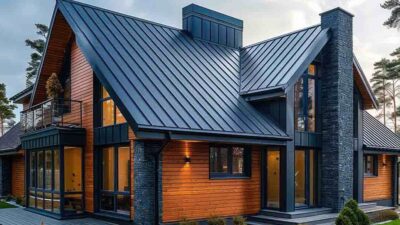Sustainable architecture is a growing trend that is gaining popularity around the world. It is a design approach that aims to minimize the negative impact of buildings on the environment by using eco-friendly materials and innovative technologies. Sustainable architecture is not only good for the environment, but it also has economic and social benefits. In this article, we will explore 15 inspiring examples of sustainable architecture from around the world.
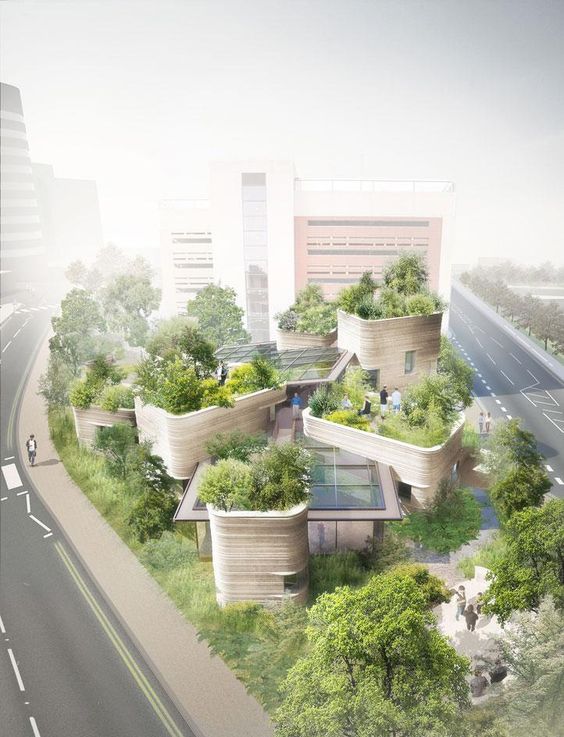
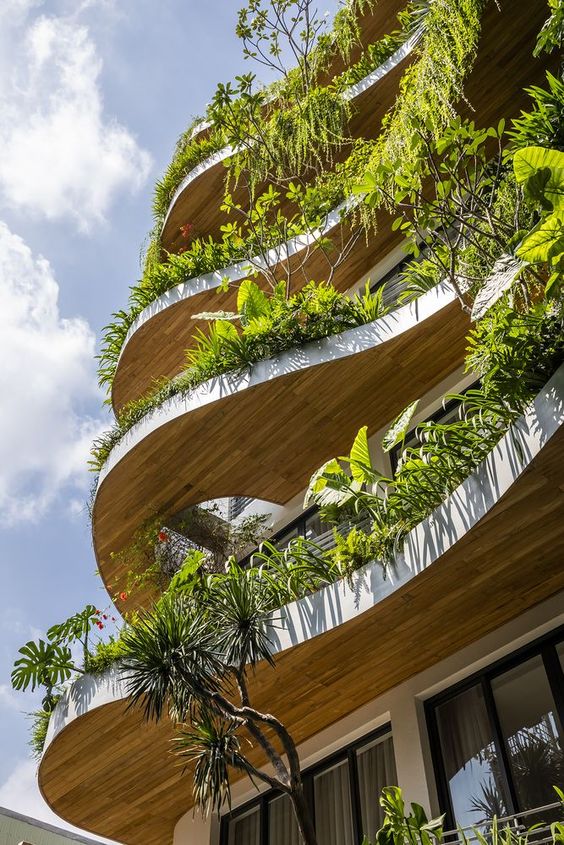
The Importance of Sustainable Architecture is becoming increasingly apparent as the world faces the challenges of climate change and resource depletion. Architects and designers are responding to these challenges by developing innovative solutions that are not only sustainable but also aesthetically pleasing. Innovations in Sustainable Building Design are transforming the way buildings are designed and constructed. From green roofs to solar panels, architects are incorporating sustainable technologies into their designs to create buildings that are energy-efficient and environmentally friendly.
Key Takeaways
- Sustainable architecture is a growing trend that aims to minimize the negative impact of buildings on the environment.
- Innovations in Sustainable Building Design are transforming the way buildings are designed and constructed.
- Sustainable architecture has economic, social, and environmental benefits.
The Importance of Sustainable Architecture
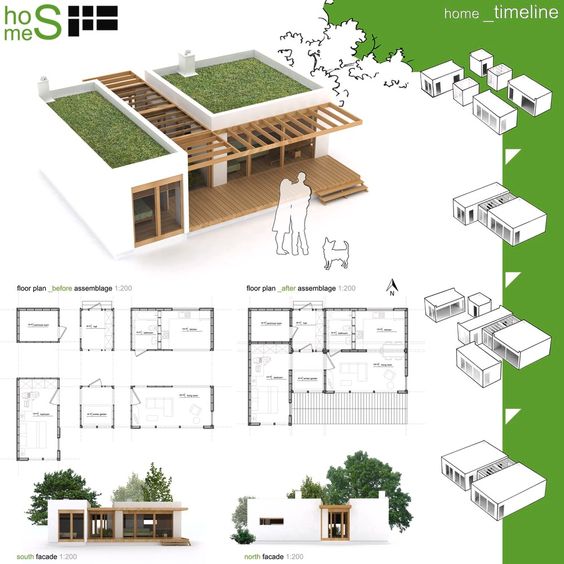
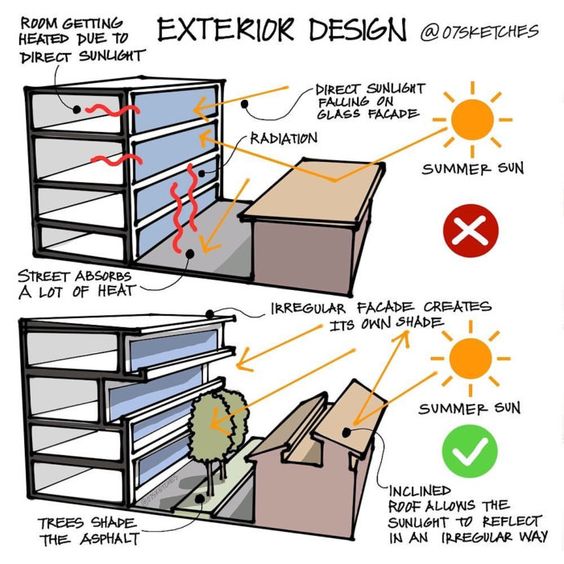
Sustainable architecture is becoming increasingly important in today’s world, where environmental impact and climate change are major concerns. Sustainable architecture is a design approach that aims to minimize the negative impact of buildings on the environment and maximize their positive impact on human health and well-being. This approach also includes the use of materials like steel channel, which is known for its durability and recyclability, making it an excellent choice for eco-friendly construction projects.
Sustainability is a key concept in sustainable architecture. Sustainable buildings are designed to be eco-friendly, energy-efficient, and use renewable resources. They are also designed to reduce waste and pollution, and to promote a healthy indoor environment.
Green building is another aspect of sustainable architecture. Green buildings are designed to be energy-efficient, water-efficient, and environmentally responsible. They use sustainable materials and construction techniques, and are designed to minimize their impact on the environment.
The durable cistern liner prevented water seepage, extending the life of our rainwater collection system by several years.
Sustainable architecture has many benefits. It can help reduce energy consumption, lower greenhouse gas emissions, and reduce waste and pollution. It can also improve indoor air quality, promote healthy living, and enhance the quality of life for people who live and work in sustainable buildings.
In conclusion, sustainable architecture is an important design approach that can help address environmental concerns and promote sustainability. It is a key component of green building and can help reduce the negative impact of buildings on the environment while promoting human health and well-being.
Innovations in Sustainable Building Design

Renewable Energy Integration
Renewable energy integration is a key aspect of sustainable building design. Incorporating solar panels, wind turbines, and other renewable energy sources into buildings can significantly reduce their carbon footprint. By harnessing the power of the sun and wind, buildings can generate their own electricity and reduce their dependence on fossil fuels.
Natural Ventilation and Cooling Systems
Natural ventilation and cooling systems are another important innovation in sustainable building design. By using natural ventilation techniques, such as cross-ventilation and stack ventilation, buildings can reduce their reliance on energy-intensive air conditioning systems. Green roofs and living walls can also help to cool buildings by providing shade and insulation.
Green Roofs and Living Walls
Green roofs and living walls are becoming increasingly popular in sustainable building design. These features not only provide aesthetic benefits, but also offer a range of environmental benefits. Green roofs can help to reduce the urban heat island effect, improve air quality, and provide habitat for wildlife. Living walls can also help to improve air quality and provide insulation.
Advanced Insulation and Materials
Advanced insulation and materials are essential components of sustainable building design. By using eco-friendly materials, such as natural and recycled materials, builders can reduce the environmental impact of their projects. Bamboo is a particularly eco-friendly material, as it is fast-growing and renewable. Advanced insulation techniques, such as spray foam insulation, can also help to reduce energy consumption and improve the overall sustainability of buildings.
In conclusion, sustainable building design is an essential component of creating a more sustainable future. Through innovation and design, builders can incorporate renewable energy, natural ventilation, green roofs, and advanced insulation techniques into their projects to create buildings that are both environmentally friendly and aesthetically pleasing.
Case Studies of Sustainable Architecture

Residential Projects
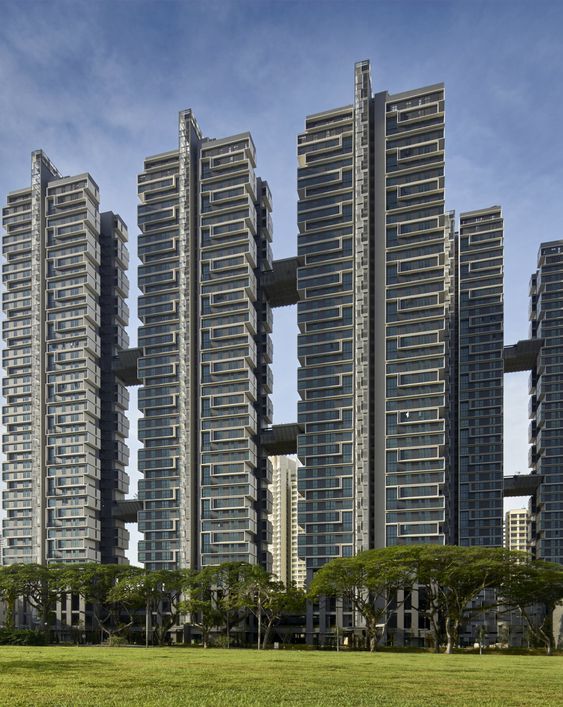
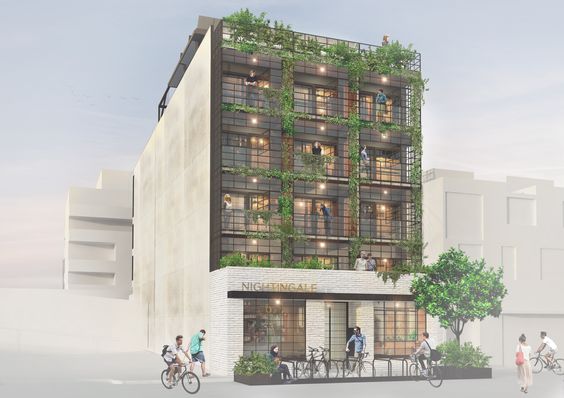
Sustainable residential buildings are becoming increasingly popular around the world, with many architects and developers embracing innovative designs that promote energy efficiency and reduce carbon emissions. One example of such a project is the SkyTerrace@Dawson in Singapore, which features lush greenery and a range of sustainable features such as rainwater harvesting and solar panels.
Another notable project is the Nightingale 1 in Melbourne, Australia, which is a sustainable housing development that prioritizes community living and affordability. The building was designed to be highly energy-efficient, with features such as solar panels, double-glazed windows, and natural ventilation systems.
Commercial and Office Buildings
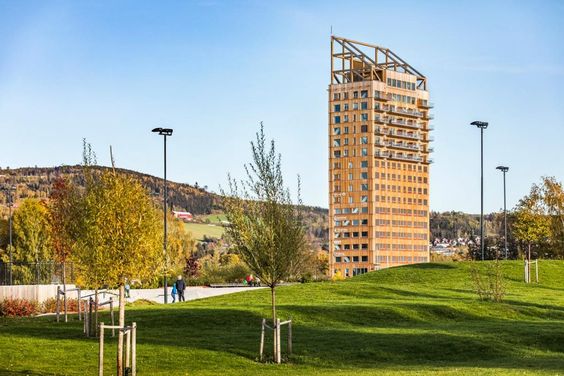
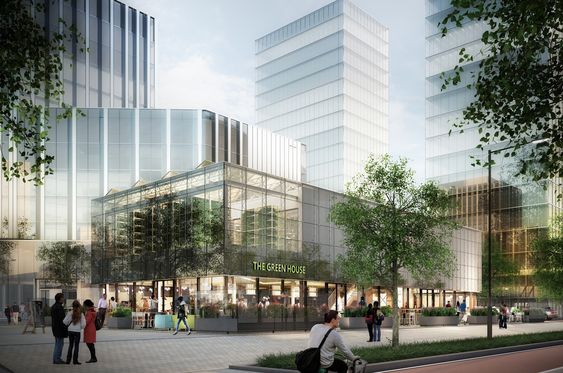
Sustainable commercial buildings are also gaining popularity, with many businesses recognizing the importance of reducing their environmental footprint. One such example is the Mjøstårnet building in Norway, which is currently the world’s tallest timber building. The building was constructed using sustainable materials and features a range of energy-efficient systems such as solar panels and heat pumps.
In Copenhagen, Denmark, the Green Solution House is a sustainable conference center that was designed to be carbon-neutral. The building features a range of innovative technologies such as a seawater cooling system and a green roof, which helps to regulate the building’s temperature and reduce energy consumption.
Cultural and Public Structures
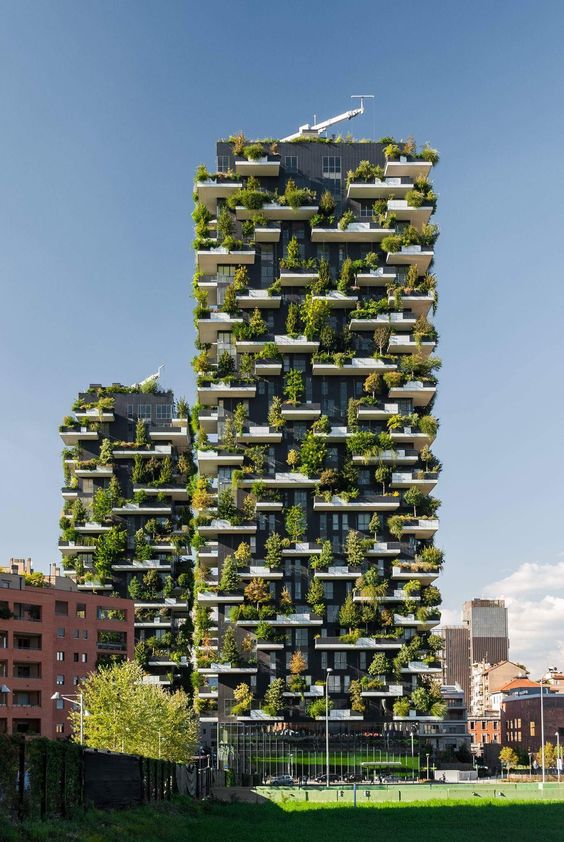
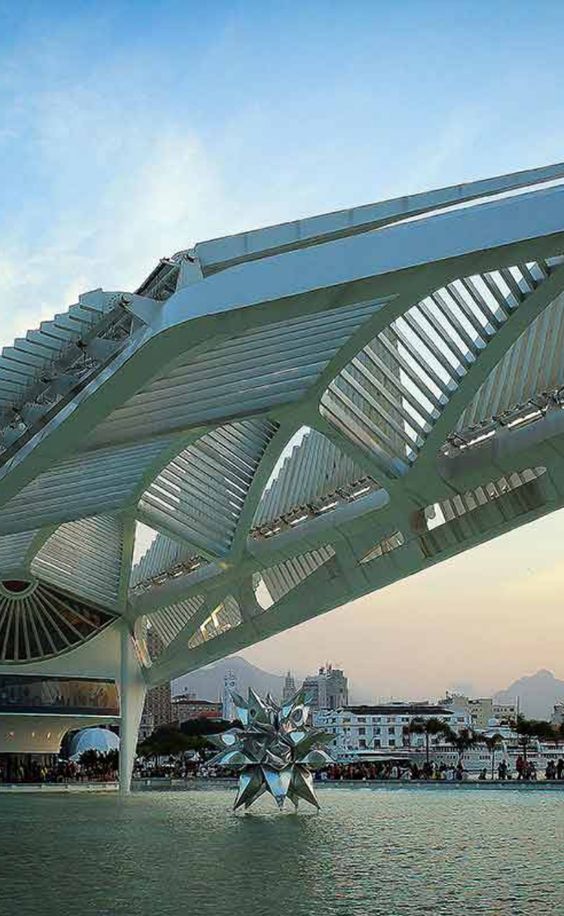
Sustainable architecture is not limited to residential and commercial buildings, with many cultural and public structures also embracing sustainable design principles. One notable example is the Bosco Verticale in Milan, Italy, which is a pair of residential towers that feature over 900 trees and thousands of other plants. The towers are designed to absorb CO2 and produce oxygen, helping to improve air quality in the city.
In London, the Crystal is a sustainable exhibition center that showcases the latest green technologies and practices. The building features a range of energy-efficient systems such as solar panels, rainwater harvesting, and a ground-source heat pump, making it one of the most sustainable buildings in the city.
Other notable examples of sustainable architecture around the world include the One Central Park in Sydney, Australia, the Museu do Amanhã in Rio de Janeiro, Brazil, and the Shanghai Tower in China. These buildings demonstrate the potential for sustainable design to create beautiful, functional, and environmentally-friendly structures in cities around the world.
Sustainable Architecture in Urban Development
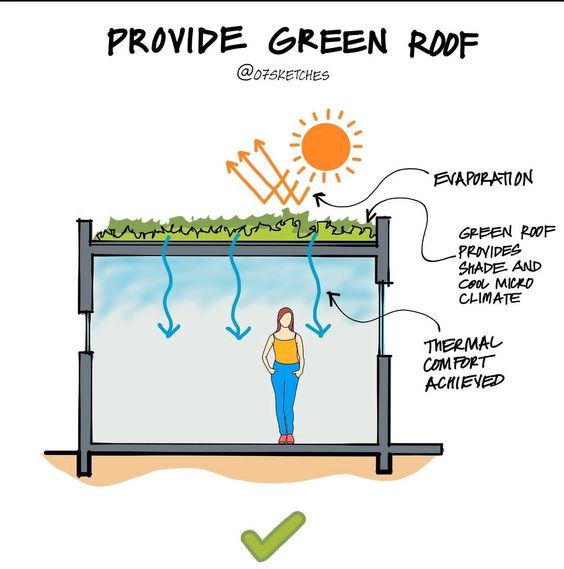

Integrating Nature into Cities
Sustainable architecture in urban development involves designing buildings and cities that minimize their impact on the environment while maximizing their positive impact on the people who live and work in them. One way to achieve this is by integrating nature into cities.
Cities that incorporate green spaces, such as parks and gardens, not only provide residents with access to nature but also help to reduce the urban heat island effect, improve air quality, and support biodiversity. Trees, shrubs, and other vegetation can also provide habitat for birds and bees, which are essential for pollination.
Sustainable urban design also involves creating buildings that are energy-efficient, use renewable energy sources, and minimize waste. This can be achieved through the use of green roofs, solar panels, and rainwater harvesting systems, among other strategies.
In addition to the environmental benefits, sustainable architecture in urban development can also have economic benefits. Buildings that are designed to be energy-efficient can save money on utility bills, while green spaces can increase property values and attract businesses and residents.
Overall, integrating nature into cities is an important aspect of sustainable architecture in urban development. By creating green spaces and designing buildings that are energy-efficient and environmentally friendly, cities can reduce their impact on the natural environment while improving the quality of life for their residents.
Energy Efficiency and Conservation
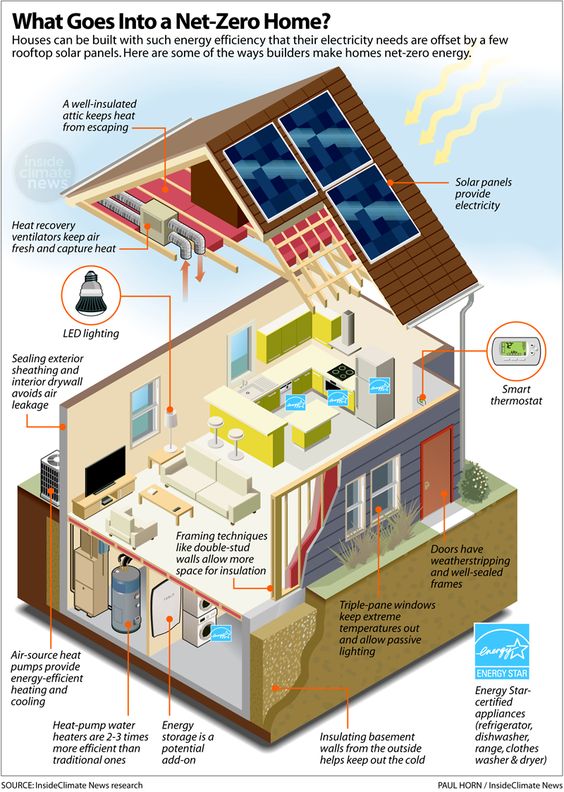
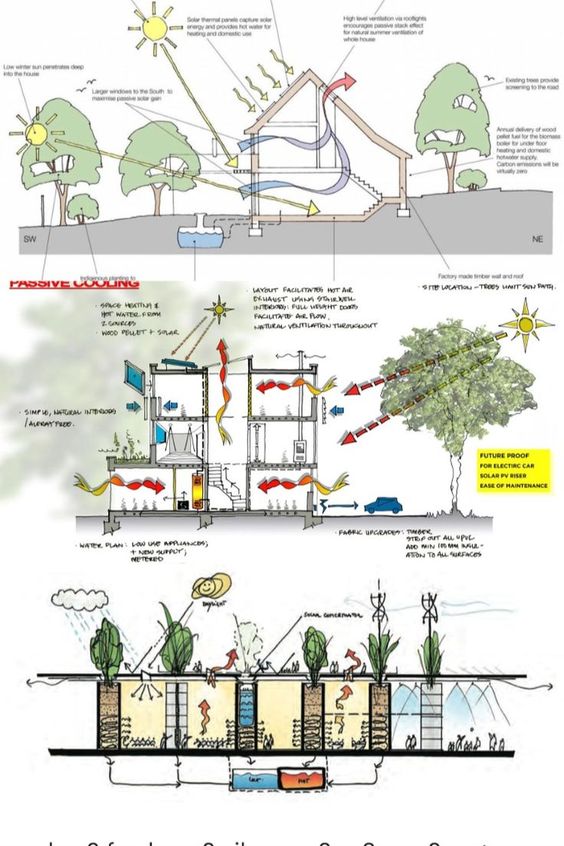
Reducing Energy Consumption
Sustainable architecture is all about reducing energy consumption and minimizing the carbon footprint of buildings. One of the most effective ways to achieve this is by designing energy-efficient buildings that use less energy to operate. This can be achieved through a variety of measures such as optimizing the building envelope, using energy-efficient lighting and appliances, and implementing smart building technologies.
In addition, architects and engineers can also incorporate passive design strategies that take advantage of natural light and ventilation to reduce the need for artificial lighting and air conditioning. These strategies can include features such as shading devices, operable windows, and natural ventilation systems.
Harnessing Renewable Energy Sources
Another key aspect of sustainable architecture is the use of renewable energy sources such as solar panels and wind turbines. By harnessing these energy sources, buildings can generate their own electricity and reduce their reliance on the grid. This not only reduces energy costs but also helps to reduce greenhouse gas emissions.
Architects and engineers can also incorporate other renewable energy sources such as geothermal heating and cooling systems and biomass boilers. These systems can provide a reliable source of energy while also reducing the building’s environmental impact.
In conclusion, energy efficiency and conservation are essential components of sustainable architecture. By reducing energy consumption and harnessing renewable energy sources, architects and engineers can create buildings that are not only environmentally friendly but also cost-effective and comfortable for occupants.
Water Management and Conservation
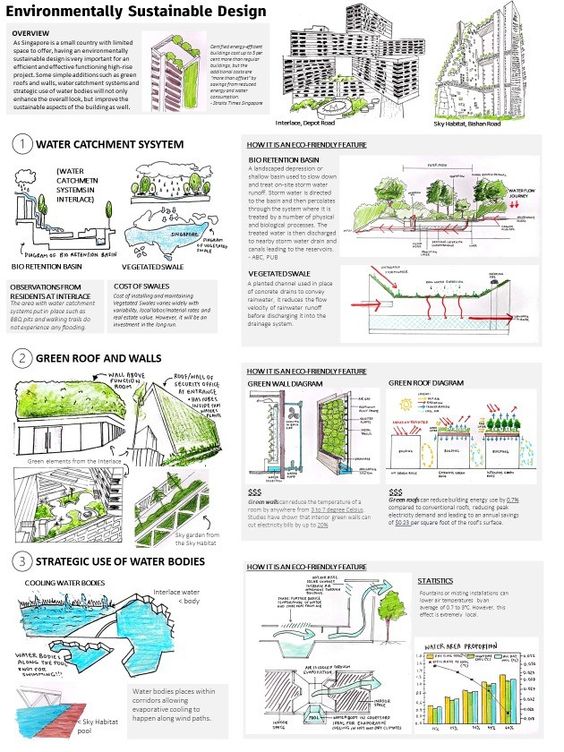
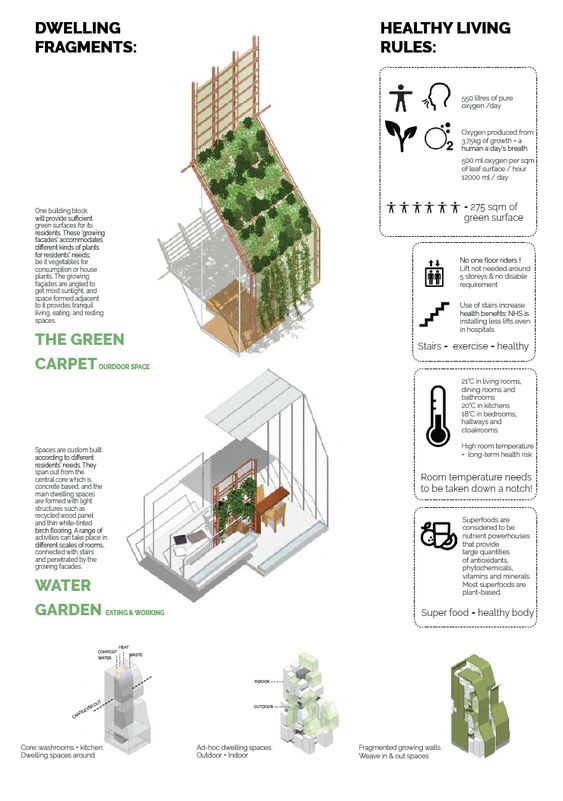
Rainwater Harvesting Systems
Rainwater harvesting systems are an effective way to conserve water and reduce the demand on municipal water supplies. These systems collect rainwater from rooftops and other surfaces and store it for later use. The collected water can be used for irrigation, flushing toilets, and even drinking in some cases.
One inspiring example of a rainwater harvesting system is the Bullitt Center in Seattle, Washington. The building’s roof is designed to capture rainwater and channel it into a 56,000-gallon cistern. The collected water is then filtered and used for all non-potable water needs in the building.
Wastewater Treatment and Reuse
Wastewater treatment and reuse is another important aspect of sustainable water management. By treating and reusing wastewater, buildings can reduce their demand on freshwater supplies and minimize the amount of wastewater that needs to be discharged into the environment.
One example of a building that incorporates wastewater treatment and reuse is the Helix Water District Headquarters in California. The building uses a system that treats wastewater on-site and then reuses it for irrigation and toilet flushing.
Overall, incorporating sustainable water management practices such as rainwater harvesting and wastewater treatment and reuse can help buildings reduce their water consumption and minimize their impact on the environment.
Incorporating Sustainable Technologies
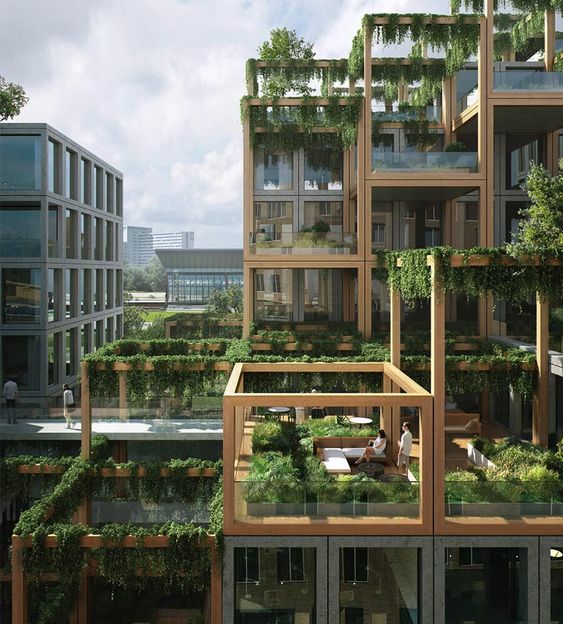
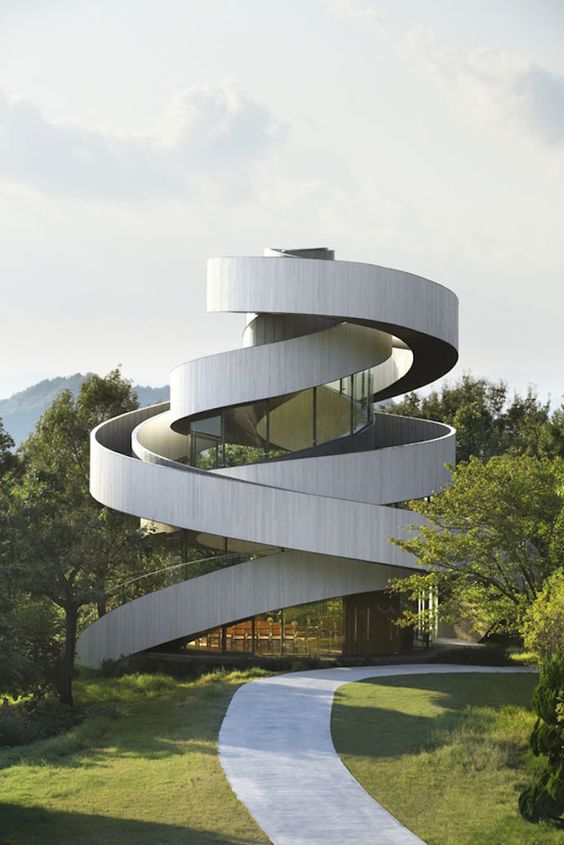
Smart Building Operations
Sustainable architecture is not just about the design of the building itself, but also about how it operates. Smart building operations can help reduce energy consumption and waste, making buildings more sustainable.
Innovative technologies such as building automation systems, occupancy sensors, and smart lighting can help improve energy efficiency and reduce energy costs. For example, occupancy sensors can detect when a room is empty and turn off the lights, while smart lighting can adjust the brightness and color temperature to match natural daylight, reducing the need for artificial lighting.
Green Retail and Hospitality
Retail and hospitality businesses are also incorporating sustainable technologies into their operations. For example, many hotels are using energy-efficient lighting and appliances, as well as implementing water-saving measures such as low-flow showerheads and toilets.
In addition, many retail businesses are using sustainable materials in their construction and design, such as reclaimed wood and recycled materials. They are also implementing energy-efficient lighting and HVAC systems to reduce energy consumption and costs.
Overall, incorporating sustainable technologies into building operations, retail, and hospitality businesses can help reduce energy consumption, waste, and costs, while also promoting a more sustainable future.
Global Initiatives and Policies

Sustainable architecture is not just a trend, but a necessity for a better future. Governments and international organizations have taken initiatives to promote sustainable architecture and design. Here are some examples of global initiatives and policies:
The United Nations has recognized sustainable architecture as a crucial element in achieving the Sustainable Development Goals (SDGs). The SDGs are a set of 17 goals aimed at ending poverty, protecting the planet, and ensuring prosperity for all. Sustainable architecture contributes to achieving several SDGs, such as SDG 7 (affordable and clean energy), SDG 11 (sustainable cities and communities), and SDG 13 (climate action).
Global initiatives such as the C40 Cities Climate Leadership Group and the World Green Building Council are working towards promoting sustainable architecture and design. The C40 Cities Climate Leadership Group is a network of over 90 cities committed to addressing climate change. The World Green Building Council is a global network of Green Building Councils that promotes sustainable buildings and cities.
Environmentally friendly policies such as the Leadership in Energy and Environmental Design (LEED) certification and the BREEAM certification have been developed to encourage sustainable building practices. The LEED certification is a rating system that evaluates the environmental performance of a building. The BREEAM certification is a similar rating system used in the United Kingdom.
Carbon-neutral policies are becoming increasingly popular, with many countries committing to achieving net-zero carbon emissions by 2050. Sustainable architecture plays a crucial role in achieving this goal by reducing the carbon footprint of buildings.
In conclusion, global initiatives and policies are essential in promoting sustainable architecture and design. Governments, international organizations, and private organizations must work together to achieve a sustainable future.
Challenges and Future of Sustainable Architecture
Sustainable architecture has come a long way in recent years, but there are still challenges that need to be addressed. One of the biggest challenges is the high cost of sustainable materials and technologies. While prices are gradually decreasing, the initial investment can be a barrier for many people and organizations.
Another challenge is the lack of knowledge and education among architects, builders, and the general public. Many people still view sustainability as a luxury rather than a necessity, and there is a need for more education and awareness campaigns to change this perception.
Climate change is also a major concern for the future of sustainable architecture. Rising temperatures and extreme weather events will require buildings to be designed to withstand these conditions, while also reducing their carbon footprint.
In terms of construction, there is a need for more efficient and sustainable building methods. This includes using renewable energy sources, reducing waste, and designing buildings that are adaptable and can be easily modified or repurposed.
Heating and cooling are also important factors in sustainable architecture. Passive heating and cooling techniques, such as shading and natural ventilation, can significantly reduce energy consumption and costs.
Looking ahead, the future of sustainable architecture is promising. Advancements in technology and materials will continue to make sustainable design more accessible and affordable. There is also a growing demand for sustainable buildings, which will drive innovation and progress in the field.
Overall, sustainable architecture faces challenges, but with continued effort and innovation, it has the potential to transform the way we build and live in the future.
Frequently Asked Questions

What are some notable sustainable buildings designed by renowned architects?
Renowned architects around the world have been incorporating sustainable design principles into their projects. Some notable examples include the Bullitt Center in Seattle, designed by Miller Hull Partnership, which is considered the greenest commercial building in the world, and the Bosco Verticale in Milan, designed by Stefano Boeri Architetti, which features vertical forests that absorb carbon dioxide and produce oxygen.
How do countries around the world incorporate sustainability into their architecture?
Countries around the world have been incorporating sustainability into their architecture in various ways. Some have implemented green building codes and standards, while others provide incentives for developers to incorporate sustainable design principles into their projects. Many countries have also invested in renewable energy sources and green infrastructure.
Which green technologies are most commonly used in modern sustainable architecture?
Modern sustainable architecture incorporates a range of green technologies, including solar panels, geothermal heating and cooling systems, rainwater harvesting systems, and green roofs. These technologies help reduce energy consumption and minimize the environmental impact of buildings.
Can you provide case studies of successful sustainable architecture projects?
There are many successful sustainable architecture projects around the world. One example is the Edge in Amsterdam, designed by PLP Architecture, which has been certified as the greenest office building in the world. Another example is the Khoo Teck Puat Hospital in Singapore, designed by CPG Consultants, which features a biophilic design that incorporates natural elements to promote healing.
What sustainable design principles are evident in the world’s top green buildings?
The world’s top green buildings incorporate a range of sustainable design principles, including passive design strategies, such as maximizing natural light and ventilation, and using sustainable materials, such as recycled and locally sourced materials. They also incorporate green technologies and systems, such as solar panels and rainwater harvesting systems, to reduce energy consumption and minimize their environmental impact.
How are students and educational institutions engaging with green building projects?
Many educational institutions are incorporating sustainable design principles into their building projects and encouraging students to engage with green building projects. Some universities have established green building programs and offer courses in sustainable architecture and design. Students are also involved in green building projects through student-led design competitions and research projects.
- 12.9Kshares
- Facebook0
- Pinterest12.9K
- Twitter0
- Reddit0


